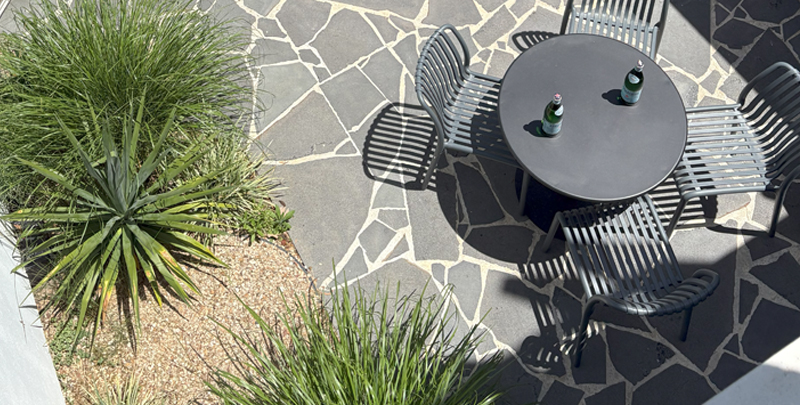Melbourne’s spring property market is gathering momentum, with first-home buyers re-entering after years on the sidelines. Federal Government incentives that enable deposits as low as 5% and waive Lenders Mortgage Insurance (LMI) have sharply reduced the traditional 10–20% lump-sum barrier to entry.
This has fuelled a surge in activity across the sub-$1 million segment. Yet for many buyers, securing a house in the inner or middle-ring suburbs remains out of reach.
As a result, apartments are emerging as the smarter path – offering lifestyle proximity without the detached-house premium. Yet even with renewed attention, it’s important to recognise that the apartment market has underperformed houses for nearly a decade. Established apartment stock has mostly held its ground or edged up, while many off-the-plan high-rises have gone backwards in value.
From our experience advising buyers, one factor consistently separates the apartments that perform from those that stagnate: notional land value.
In essence, it’s your proportional share of the development site’s underlying land – expressed through unit entitlement – even though you don’t own the ground itself.
We’ll unpack how to evaluate it, identify apartments with high notional land value, and read redevelopment patterns that can amplify long-term returns – making this an opportune moment for strategic entry.
The power of notional land value
Land fuels property appreciation, nowhere more so than in Melbourne’s inner suburbs where space is finite and coveted. Unlike houses, where land is tangible and expansive, apartments carry a ‘notional’ share – somewhat invisible but vital. Scarcity here amplifies demand: no new land is created, and relentless development pulls more skyward, tightening supply and propelling values.
Overlooking this dooms many apartment investments to stagnation. High-rises, for instance, dilute land across dozens of units, capping growth potential. Prioritising a strong notional land component transforms apartments from mere shelters into appreciating assets, particularly in premium precincts where urban pressure intensifies.
How to calculate your land share
Determining an apartment’s land value isn’t complex, but it demands a few deliberate steps beyond surface-level checks. Start by establishing the development site’s total area and its market worth – think comparable land sales nearby. Avoid simply dividing by unit count; consult the plan of subdivision for unit entitlement, which reflects your proportional ownership based on size and features.
For example, if the site totals 240 entitlements and yours is 60, that’s a 25% stake – apply this to the site’s value for your notional land share. Then compare how much of the overall purchase price that notional land represents; in general, the higher the proportion attributable to land, the stronger the growth potential over time.
Apartment types built on land advantage
Steer clear of high-rises, where land share rarely tops 10% – a slim foundation for growth amid abundant supply.
Instead, target older boutique blocks, which pack the punch: fewer units on larger sites, often under-capitalised relative to modern standards.
Art Deco gems exemplify this – pioneering multi-storey living with spacious lots that today’s developments just don’t build for.
Blocks from the 1950s-70s era also shine, built minimally on prime parcels in suburban streets ripe for optimisation.
These under-utilised sites promise uplift as markets evolve, outpacing crowded modern-day towers.
Melbourne’s geography of value
These land-rich apartments cluster in Melbourne’s enduring blue-chip suburbs, where desirability spans generations.
Eastern and south-eastern enclaves like Boroondara and Stonnington top the list – long-established havens of high demand and value, prompting historical waves of affordable apartment builds.
What sets them apart? Consistent allure drew mid-century construction on generous sites, now undervalued against soaring land prices. Proximity to amenities, schools, and transport sustains appeal, ensuring steady buyer interest and redevelopment feasibility.
When land becomes the driver – and developers follow
Developers are increasingly paying premiums for under-capitalised blocks because stand-alone lots are harder to secure. It’s been a growing trend that we at Wakelin saw coming since the 1990s.
This trend has been most evident first in ultra-premium pockets such as Toorak, Hawthorn, South Yarra, and East Melbourne, where end values justify the outlay. In the past three to five years, activity has branched into still-coveted areas like East Hawthorn and Prahran.
We expect this pattern to continue across Melbourne, though timing will vary by location.
Buyers should note hurdles: it’s much harder to get 12, 16, or 20 owners to agree than it is to align four – so smaller blocks typically move first. Heritage overlays protect many Art Decos, while planning rules or protected trees can deter demolition.
Still, as land hunger grows, these apartments become redevelopment magnets – unlocking windfalls for patient owners.
ON GROUND CASE STUDY
From $1M units to $9M site
In one standout scenario, we advised three owners holding four apartments in a Hawthorn street of enviable location. The 1,000-plus square metre site was clearly under-capitalised – with a vast land component, and only a basic level of building component.
Individually the units were valued at around $1 million each.
All parties aligned on selling as a whole, eyeing developer appeal.
A site tidy-up sharpened the pitch without major expenditure.
The block was marketed as a whole at $7 million.
And interest for the plot surged, resulting in four bidders at auction driving it past $9 million – over $2.25 million per apartment, a 125% uplift.
Take-home message
In a market giving first-home buyers renewed access, apartments offer a genuine foothold if you focus on the land beneath.
By calculating your notional land share, targeting boutique under-capitalised blocks in blue-chip locations, and recognising where developers are already signalling value, you position yourself for durable, compounding growth.
As Melbourne continues to densify, land, not buildings, will remain the lasting source of value.
Listen to Jarrod’s podcast:

